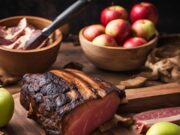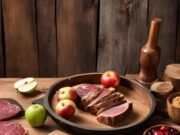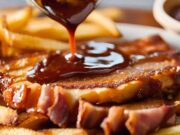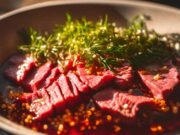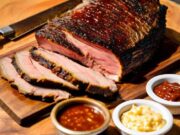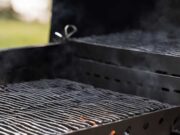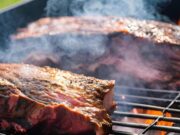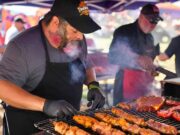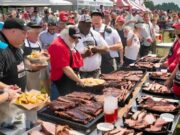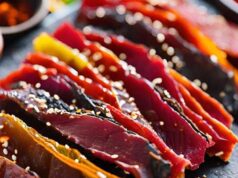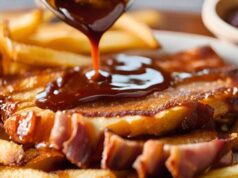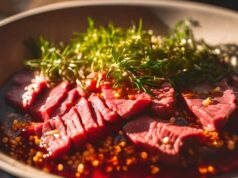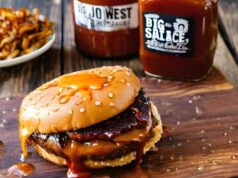Barbecue beef is more than just a meal; it represents a culinary experience rich in tradition and flavor.
This guide provides you with everything you need to know about BBQ beef, including its extensive history, the best cuts to select, and the essential equipment and techniques that ensure outstanding results.
Whether you are a novice or a seasoned pitmaster, you will discover classic recipes and innovative ideas that will enhance your grilling skills.
Prepare to enjoy the smoky, savory delights of BBQ beef.
Key Takeaways:
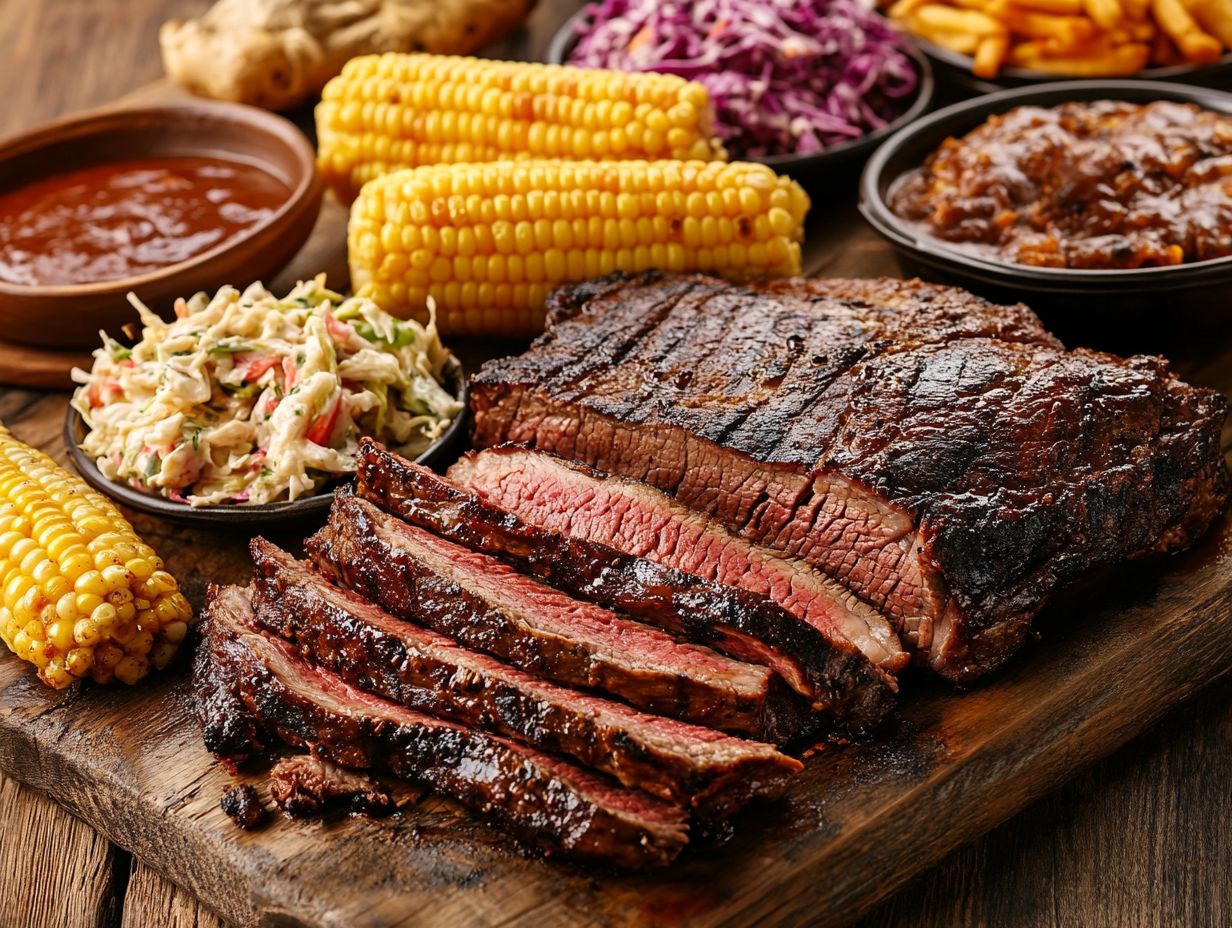
- Master the different cuts of beef for BBQ and understand the history behind this popular cooking technique.
- Equip yourself with essential BBQ equipment and techniques to achieve perfectly cooked beef every time.
- Get creative with your BBQ and try new recipes and flavor combinations, while avoiding common mistakes and learning how to enhance the flavor of your meat.
Understanding BBQ Beef
Understanding BBQ beef requires you to delve into what makes this beloved dish unique. You will explore its various cuts, cooking techniques, and the rich history that has shaped barbecuing traditions.
What is BBQ Beef?
BBQ beef encompasses a variety of cuts that are seasoned, grilled, or smoked to enhance their natural flavors, resulting in a delicious and hearty dish that is often enjoyed at cookouts and gatherings.
The preparation of BBQ beef begins with selecting the appropriate cut, such as brisket, ribs, or flank steak, each providing a unique taste profile. Marinating is a vital step in the process, as it allows the meat to absorb flavors from spices, herbs, and acidic ingredients like vinegar or citrus, which serve to tenderize the beef. Additionally, seasoning plays a crucial role; a well-balanced rub can significantly elevate the overall taste.
The choice of cooking techniques, such as low-and-slow smoking or high-heat grilling, can greatly influence the texture and flavor of the beef. These methods result in tender, juicy bites infused with smoky undertones that are simply irresistible.
The History of BBQ Beef
The history of BBQ beef is embedded in American culinary tradition, evolving through various regional practices that have shaped how you grill and enjoy this flavorful meat today.
From the early methods employed by Native Americans, who used pits filled with hot stones to slow-cook meat, to the Spanish influence that introduced the concept of barbacoa, BBQ beef has experienced remarkable transformations. As settlers moved westward, barbecue evolved into a social activity, incorporating local ingredients and flavors, which led to the emergence of distinct styles such as Texas brisket and Carolina pulled beef.
Each region showcases its own techniques, sauces, and cooking methods, reflecting the diverse cultural backgrounds that have contributed to the BBQ landscape. This journey highlights not only a unique culinary art form but also the social and cultural significance of sharing a meal around the grill.
Different Cuts of Beef for BBQ
Different cuts of beef, such as brisket, ribs, and chuck, provide unique textures and flavors that can greatly enhance your BBQ experience when grilled or smoked correctly.
For a rich smoky flavor, consider the marbled goodness of ribeye, which becomes incredibly tender when cooked to medium-rare. Alternatively, the flavorful yet tough flat iron cut benefits from a good marinade and a quick sear. The well-known brisket, a favorite for slow-smoking, requires patience as it transforms into a succulent treat over several hours.
Pork ribs are renowned for their fall-off-the-bone tenderness, and they are best complemented by a sweet barbecue sauce that enhances their savory richness.
In terms of seasoning, techniques can vary widely; while a classic rub of salt and pepper is always a safe bet, smoked paprika, garlic powder, and brown sugar can elevate the flavor profile of nearly any cut, turning each BBQ session into an exciting culinary adventure.
Essential BBQ Equipment
To ensure a successful BBQ experience, it is crucial for you to have the essential equipment, including grills, smokers, and useful accessories. This preparation is key to mastering the art of barbecuing and achieving the perfect flavor.
Types of Grills and Smokers
The types of grills and smokers you choose for BBQ can significantly impact the cooking process and flavor of the beef, with options ranging from traditional charcoal grills to modern pellet smokers. Each type offers distinct characteristics that influence heat retention and the infusion of smoky flavor.
For example, gas grills are often preferred for their convenience and precision, allowing for quicker temperature adjustments. Meanwhile, charcoal enthusiasts appreciate the intense, rich flavors that come from direct heat.
On the other hand, wood-fired smokers, such as offset smokers, are renowned for their ability to produce succulent, slow-cooked meats, imparting a unique smoky profile that enhances any BBQ experience.
When selecting the ideal grill or smoker, it is crucial to consider not only your culinary preferences and techniques but also the desired cooking style, such as indirect grilling or low-and-slow smoking. This thoughtful approach will ensure your next outdoor cooking adventure is both enjoyable and memorable.
Tools and Accessories You Need
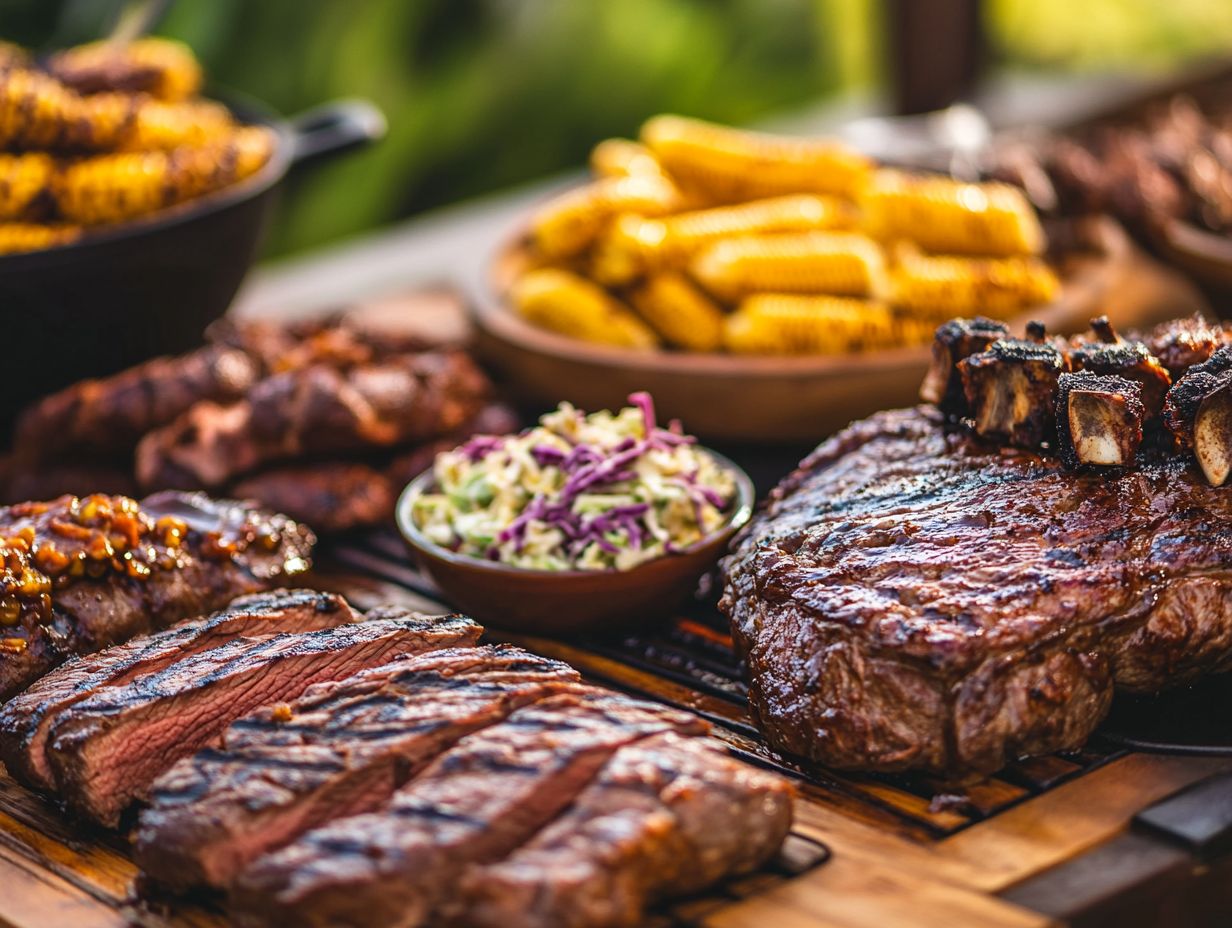
Having the right tools and accessories, such as meat thermometers, basting brushes, and grill brushes, is essential for achieving BBQ perfection and ensuring a safe cooking process.
These tools not only streamline your cooking but also play a crucial role in enhancing safety and flavor. For instance, a reliable meat thermometer is essential for accurately gauging internal temperatures, which helps prevent undercooked or overcooked meat. Additionally, a good basting brush is vital for applying marinades and sauces evenly, allowing you to lock in moisture and add layers of flavor during the grilling process.
Grill brushes, with their sturdy bristles, are important for maintaining a clean cooking surface, ensuring that residue does not taint your food. By incorporating these high-quality BBQ accessories, you can create mouthwatering dishes while upholding the standards of safe cooking practices.
BBQ Techniques for Beef
Mastering BBQ techniques for beef requires a thorough understanding of key processes such as marinating, seasoning, and smoking. These elements play a crucial role in developing flavorful and tender dishes.
Preparing the Beef: Marinating and Rubs
Preparing the beef through marinating and applying rubs is essential for infusing flavor and ensuring tenderness in your BBQ beef dishes.
By taking the time to soak the meat in a flavorful marinade—which may include ingredients like soy sauce, vinegar, or citrus juices—you can significantly enhance both moisture and taste. The marination process allows the acids to penetrate the meat, breaking down tougher fibers and making it more succulent.
Additionally, applying a dry rub—a blend of spices, herbs, and sometimes sugar—adds a distinct texture and creates a flavorful crust during the cooking process. The type of rub you choose, whether it’s sweet, smoky, or spicy, will greatly influence the overall profile of the BBQ beef, ensuring that every bite is filled with robust flavors that complement the natural richness of the meat.
Understanding Heat and Cooking Methods
Understanding heat control and various cooking methods is essential to BBQ beef, enabling you to achieve the ideal texture and flavor while preventing overcooking.
Different heat levels play a crucial role in the final outcome, with techniques such as low and slow cooking allowing the meat to become tender and infused with smoky flavors. This method promotes the breakdown of connective tissues, enhancing the overall palatability of the beef. In contrast, high and fast cooking can create a delightful crust while sealing in juices, making it perfect for certain cuts. Mastering temperature management enables you to adapt to the type of meat and the desired doneness, enhancing every bite.
By balancing direct and indirect heat, you can become a BBQ enthusiast, impressing guests with perfectly cooked beef dishes.
Perfecting the Smoking Process
Perfecting the smoking process is essential for achieving optimal BBQ beef, as the selection of wood chips and the smoking duration can significantly enhance the meat’s flavor profile.
Choosing the right type of wood chips is a critical aspect of this culinary skill. For example, hickory chips provide a robust, smoky flavor that beautifully complements the richness of beef, adding a savory depth that many grilling enthusiasts desire. On the other hand, mesquite offers a bolder, slightly sweet, and earthy character, creating a unique taste experience for those willing to explore beyond traditional barbecue flavors.
It is also important to understand the appropriate smoking duration, which typically ranges from a few hours for brisket to overnight for larger cuts. This can greatly impact the tenderness and infusion of smoky flavor in the meat. Mastering these smoking techniques not only enhances the aroma of the final dish but also elevates the overall BBQ experience.
Classic BBQ Beef Recipes
Classic BBQ beef recipes, including brisket, ribs, and steaks, showcase a range of grilling techniques and seasonings designed to enhance the natural flavors of high-quality beef cuts.
By mastering these methods, you can elevate your grilling experience and create truly exceptional dishes.
Brisket: The Ultimate BBQ Challenge
Brisket is widely recognized as the ultimate BBQ challenge, demanding mastery of techniques such as low and slow cooking, proper seasoning, and smoking for several hours to achieve optimal tenderness and flavor.
As you embark on this culinary journey, it is essential to start with a carefully selected cut that offers the right balance of fat and meat. Marination plays a critical role in enhancing flavor; many pitmasters prefer a straightforward rub made from salt, pepper, and their selection of spices. This infusion of flavor, combined with meticulous cooking times that often exceed 12 hours, allows the meat’s connective tissues to break down, resulting in a melt-in-your-mouth experience.
When smoking brisket, utilizing woods like hickory or mesquite can impart a profound depth of flavor that beautifully complements the brisket’s rich taste. Understanding how these elements interact can significantly elevate your BBQ skills.
Ribs: Techniques for Perfectly Cooked Ribs
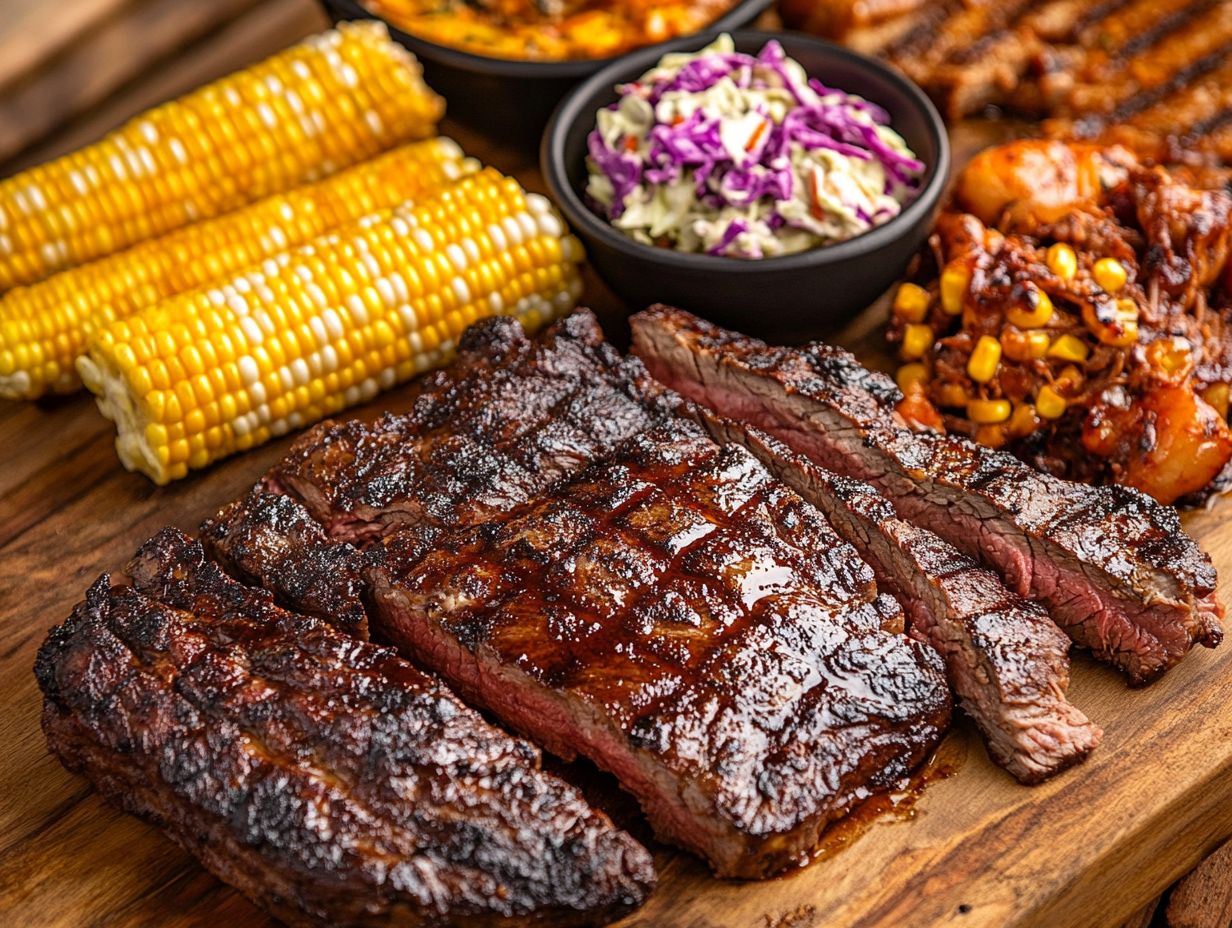
Cooking ribs to perfection requires specific techniques, including maintaining an ideal temperature, selecting the right rubs, and utilizing both grilling and smoking methods.
To achieve juicy, flavorful ribs, you should begin with careful preparation by choosing high-quality cuts of meat and marinating them overnight to enhance tenderness. A well-balanced rub of spices will help create a crust that locks in moisture.
When grilling, the decision between direct and indirect heat is crucial; using indirect heat allows for slow cooking, which beautifully melds flavors while keeping the meat succulent.
Timing is also essential, as most ribs need several hours to fully tenderize, so exercising patience is key to achieving that mouthwatering bite.
Steaks: Grilling to Perfection
Grilling steaks to perfection requires a combination of high heat, proper seasoning, and an understanding of cooking temperatures to achieve the desired doneness.
To elevate your grilling game, it is essential to comprehend the science behind heat management and meat selection. Starting with the right cut is crucial; options such as ribeye, filet mignon, or New York strip offer varying flavors and textures that can enhance your grilling experience. Marinating the steak for a few hours prior not only infuses incredible taste but also tenderizes the meat, resulting in a more enjoyable meal.
In terms of temperature control, utilizing a meat thermometer can ensure that each steak reaches the intended level of doneness—whether rare, medium, or well-done—thus creating a consistently delightful dish.
Tips for BBQ Success
Achieving BBQ success requires you to understand key tips and avoid common mistakes that can compromise the flavors and textures of your beef dishes.
Common Mistakes to Avoid
Common mistakes in BBQ, such as overcooking beef or neglecting proper seasoning, can lead to disappointing results that diminish the overall experience.
These errors not only affect the flavor and texture of the meat but can also transform an enjoyable gathering into a frustrating ordeal. Many BBQ enthusiasts overlook the importance of allowing the beef to rest after cooking, which can cause valuable juiciness to be lost to the cutting board.
Using a cooking technique that does not suit the cut of beef can result in tougher, less flavorful meat. By understanding the appropriate times and temperatures for different cuts and investing time in a thoughtful marinade or dry rub, you can significantly elevate your barbecuing skills.
Whether it’s a simple seasoning or a blend of spices, proper preparation is essential for unlocking a far more satisfying BBQ experience.
How to Achieve the Perfect BBQ Flavor
Achieving the perfect BBQ flavor requires you to find a balance between seasoning, cooking techniques, and selecting the right wood chips for smoking.
To elevate the taste of your grilled meats and vegetables, utilizing a variety of rubs and marinades can make a substantial difference. Rubs, which typically consist of a combination of spices, herbs, and sometimes sugar, create a delightful crust that locks in moisture. In contrast, marinades, often rich in acids like vinegar or citrus juice, tenderize the meat while infusing it with unique flavors.
Experimenting with different smoking techniques, such as incorporating wood chips from fruit trees or hardwoods, can introduce distinct, aromatic undertones that transform the overall BBQ experience. Tailoring these approaches to your personal preferences can unlock a world of savory possibilities.
Exploring Innovative BBQ Beef Recipes
Exploring innovative BBQ beef recipes allows you to discover unique flavors and creative cooking methods that can enhance your grilling skills significantly.
By experimenting with these recipes, you can elevate your culinary techniques and impress your guests with exceptional dishes.
Creative Dishes to Try on Your Grill
In terms of your grilling repertoire, consider exploring creative dishes that utilize unconventional beef cuts and innovative seasonings to challenge traditional BBQ norms.
For example, you might want to experiment with less common cuts like flank or skirt steak. These cuts can marinate beautifully in a zesty citrus-soy mixture, resulting in a flavor profile that is both punchy and refreshing. Additionally, incorporating unexpected ingredients like coffee grounds or smoked paprika into your rub can significantly enhance the rich flavors of the beef, tantalizing your taste buds.
Grilling beef alongside seasonal vegetables or tropical fruits can add depth and a touch of sweetness, elevating the overall dish. The beauty of BBQ lies in its capacity to evolve continuously, inviting you to embrace bold new combinations and techniques in your cooking endeavors.
Pairing BBQ Beef with Sides and Sauces

Pairing BBQ beef with the appropriate sides and sauces can significantly enhance the overall dining experience, creating a harmonious blend of flavors that complements the smoky richness of the meat.
Selecting the ideal accompaniments not only elevates the taste but also adds texture and depth to the meal. For example, tangy coleslaw provides a refreshing crunch, while creamy potato salad offers a comforting contrast.
Barbecue sauces, which range from sweet and sticky to zesty and spicy, can further amplify the flavor profile of the BBQ beef. Light, vinegary sauces can cut through the richness, while honey-based variations can enhance the sweetness of the glaze.
When considering sides, you might choose options such as:
- Grilled corn
- Baked beans
- A fresh cucumber salad
Each of these brings unique nuances that work beautifully with the smokiness of the beef.
Recap of Key Takeaways
The key takeaways from this guide emphasize the essential aspects of BBQ beef, including selecting the right cuts and mastering cooking techniques and flavors.
Throughout the guide, you will be introduced to various cuts such as brisket, ribeye, and flank steak, each offering unique textures and tastes when cooked using different methods. Techniques such as slow smoking, grilling, and marinating are explored, highlighting how they enhance the natural flavors of the beef. Signature rubs and marinades further elevate the dishes, showcasing bold profiles that are sure to impress.
With practical tips and standout recipes, you can enhance your BBQ skills, ensuring the preparation of mouth-watering beef that will be the highlight of any gathering.
Encouragement to Experiment and Enjoy BBQ
You are encouraged to experiment with various BBQ techniques and recipes to discover new flavors and enhance your grilling skills.
Exploring different marinades, rubs, and cooking methods can significantly elevate your grilling experience, transforming each session into a delightful adventure. Whether you decide to experiment with smoky wood chips for that perfect infusion of flavor or try out new side dishes that complement your meat creations, the possibilities are endless.
As you embrace your creativity, do not hesitate to combine unexpected ingredients or flavors that excite your palate. Gather your friends and family, fire up the grill, and embark on this flavorful journey together. Allow the joy of BBQ cooking to inspire you to try new recipes and techniques, ultimately unleashing your inner grill master.
Frequently Asked Questions
What are the different techniques for BBQ beef?
There are various techniques for BBQ beef such as smoking, grilling, roasting, and slow cooking. Each technique brings out unique flavors and textures in the beef.
What is the best cut of beef for BBQ?
The best cut of beef for BBQ depends on personal preference and the cooking technique. However, popular choices include brisket, short ribs, and tri-tip.
What are some tips for achieving the perfect BBQ beef?
Some tips for perfect BBQ beef include using a meat thermometer to ensure proper temperature, marinating the beef before cooking, and letting the meat rest after cooking to retain its juices.
What are some popular BBQ beef recipes?
Some popular BBQ beef recipes include smoked brisket, grilled beef ribs, BBQ pulled beef sandwiches, and roasted beef tenderloin. There are also various marinades, rubs, and sauces that can be used to enhance the flavor of the beef.
How do I know when my BBQ beef is done?
The best way to know when your BBQ beef is done is by using a meat thermometer. The internal temperature should reach 145°F for medium-rare, 160°F for medium, and 170°F for well-done beef.
Can I make BBQ beef without a grill?
Yes, you can make BBQ beef without a grill. Other cooking techniques such as roasting in the oven or slow cooking in a crockpot can also produce delicious BBQ beef. Just make sure to adjust the cooking time accordingly.



